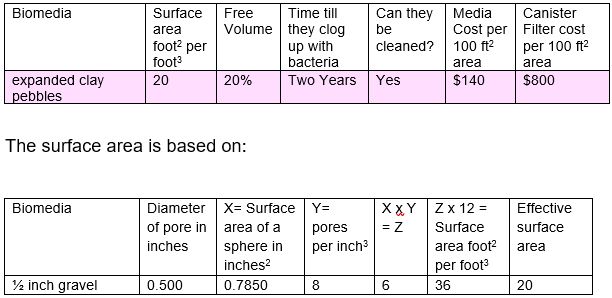If one is absolutely enamored of the ceramic media approach expanded clay pebbles are a cheap way to go. This media is used for hydroponics and growing orchids. It is cheap, anywhere from one to $1 to $2 per liter. This product has a low effective surface area of 20 FT2/FT3. As such this product is neither effective for aeration or for biofiltration. Some trade names are LECA and Hydroton.
The data on the master chart for expanded clay balls is:

This is a porous ceramic media with properties virtually identical to some very high priced ceramic media like Biohome. Ceramic media claim very large surface areas and very good beneficial bacteria production because they are porous. But the pore in the media are too small for bacteria to fit into. So in testing ceramics performed very poorly. Although they were not tested per se, ceramic balls undoubtedly will also perform very poorly.
To see why ceramics like BioHome and ceramic rings (and undoubtedly clay balls) did very poorly in scientific tests go to this link:


